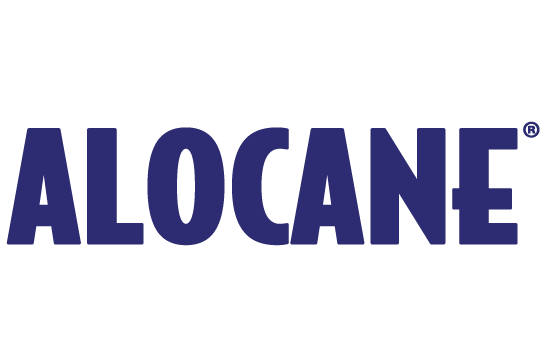Treatment & uses
Find answers to your questions
Firework Safety 101: How to Prevent and Treat Burns This Summer
Table of Contents
Celebrate safely this summer with our complete guide to fireworks. Learn how to avoid painful burns, treat minor injuries at home, and know when it’s time to seek medical help.
Summer nights filled with fireworks, sparklers, and barbecue grills are a cherished tradition for many families. The Fourth of July, birthday parties, and weekend cookouts bring us together, creating lasting memories with friends and family. But amid all the fun, it is crucial to remember that fireworks and sparks can pose a serious burn risk, especially if proper safety measures aren’t followed.
Every year, nearly 10,000 people in the USA suffer fireworks-related injuries, many of them children and young adults. The majority of these injuries are minor, but some can be severe and require a trip to the hospital. Whether you’re lighting a few sparklers in your backyard or putting on a small fireworks display, it’s essential to know how to stay safe and what to do if a burn occurs.
This guide covers everything you need to know from firework safety tips to how to treat a minor burn immediately and highlights a powerful first aid solution you should have on hand: Alocane Burn Gel and Alocane Burn Spray.
How to Stay Safe Around Fireworks
Prevention is key when it comes to avoiding fireworks-related injuries. Here are some simple yet effective firework safety tips to help keep you and your family safe this summer.
Always follow local laws and guidelines
Before you celebrate, check whether fireworks are legal in your area and follow all local regulations. Certain fireworks may be prohibited due to nearby drought conditions or community safety codes.
Supervise children closely — sparklers burn at over 1,000°F
Sparklers may seem harmless, but the tip of a sparkler reaches temperatures of upward of 1,000°F, enough to cause a severe burn in seconds. Always supervise children when they handle sparklers and teach them to keep sparks away from their face and body.
Light one firework at a time and back away quickly
Don’t light multiple fireworks at once, and move back immediately after lighting. Give yourself plenty of space to avoid sparks or explosions.
Never relight “duds” or hold lit fireworks in your hands
A faulty or “dud” firework might explode unexpectedly if you move it or try to light it again. Soak duds in water and dispose of them safely instead of attempting to relight.
Keep a bucket of water or hose nearby
Having water nearby lets you quickly douse sparks or small fires and safely dispose of fireworks afterwards. It’s a simple precaution that can help avoid a dangerous situation.
What to Do If You Get a Minor Burn
Accidents can happen in a split second — a spark may fly in the wrong direction or a piece of charcoal may flare up from the grill. If you suffer a minor burn, follow these first aid steps immediately:
1. Cool the area under cool (not cold) water for 10–15 minutes
Remove any restrictive clothing or jewelry and let cool water flow directly over the burn. Doing this promptly can help ease the pain and reduce damage to the skin.
Tip: Do not use freezing water or ice; this can damage the skin further.
2. Gently clean the area with mild soap and water
Once cooled, carefully cleanse the injured skin with mild soap and water to help avoid infection. Pat the area dry with a clean, soft towel — do not scrub.
3. Apply Alocane Maximum Strength Emergency Burn Gel or Alocane Burn Spray for fast, cooling relief
For quick pain relief and skin healing, apply Alocane immediately after washing. Alocane’s 4% Lidocaine formula numbs the area on contact, while aloe and vitamin E help soothe and heal. Whether you use the gel or spray, Alocane provides a protective barrier against infection and further damage.
4. Avoid breaking blisters and keep the burn clean and protected
Blistered skin is a sign of a second-degree burn. Do not pop blisters; this can expose raw skin to infection. Instead, apply a nonstick bandage and watch for signs of infection — redness, pus, or persistent pain.
If you suffer a burn to the face, hands, genitals, a large area of the body, or a deep, severe burn, seek medical help immediately.
Keep Alocane on Hand for the Summer
From a sparkler gone awry to a barbecue flare-up, minor burns can happen quickly — which is why having Alocane handy is a smart way to be prepared all summer long.
Alocane is Trusted by Families and First Responders
Alocane’s 4% Lidocaine formula provides fast-acting pain relief, while aloe and vitamin E help to soothe and heal the skin. It’s a powerful combination that can ease discomfort and promote recovery — perfect for the whole family.
Alocane Gel or Spray — Your First Line of Defense
Whether you prefer the convenient spray or the cooling gel, Alocane products bring fast, effective relief immediately upon application. Keep a tube in your first aid kit, in your car, or by the grill — you never know when you might need it.
Ideal for Grilling Burns, Sunburn, and Firework Mishaps
Alocane isn’t just for fireworks-related injuries; it's a must-have for all summer skin emergencies — from burns sustained while barbecuing to painful sunburns after a day at the pool or beach.
- Choosing a selection results in a full page refresh.
- Opens in a new window.
